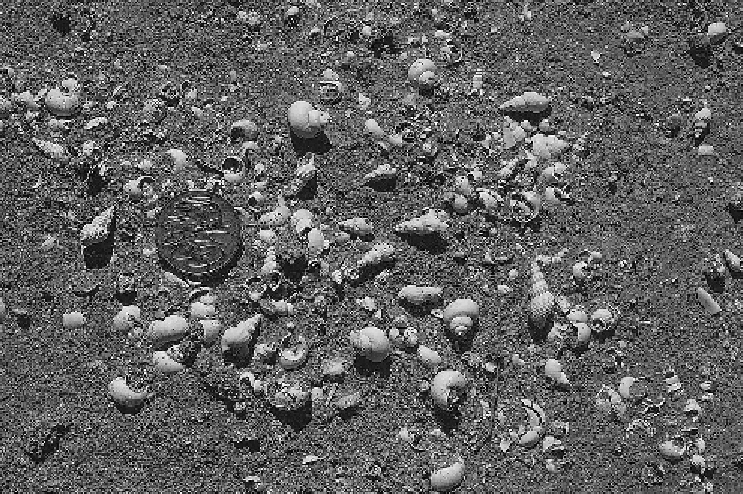Geoscience Reference
In-Depth Information
Figure 16.3. Surface shells on edge of Holocene Lake Boolaboolka, lower Darling
Basin, Australia. (Photo: Don Adamson.)
in the semi-arid Snowy Mountains of south-east Australia (Jie Chang, pers. comm.,
December 2012).
16.4.3 Non-marine mollusca
One advantage of using fossil aquatic mollusca to reconstruct past environmental
changes stems from their relative abundance and good state of preservation in flu-
vial and lacustrine sediments (Miller and Tevesz,
2001
)(
Figure 16.3
). For example,
Williamson (
1982
) was able to carry out a detailed analysis of molluscan biostrati-
graphy of the hominid-bearing deposits at Koobi Fora in north Kenya and found
serious stratigraphic miscorrelations between several local sections where the correl-
ation was based solely on fossil vertebrate evidence. In north-west Cape Province,
Kent and Gribnitz (
1985
) used freshwater shell deposits associated with higher lake
levels as additional evidence of a widespread wet phase during the late Pleisto-
cene, when rainfall was higher, temperatures were lower and evaporation was much
reduced.
African mollusca have been studied in great detail (Brown,
1980
; Van Damme,
1984
;Brown,
1994
), not least because two genera,
Bulinus
and
Biomphalaria
, are vec-
tors of the water-borne parasitic disease schistosomiasis. These studies have provided

